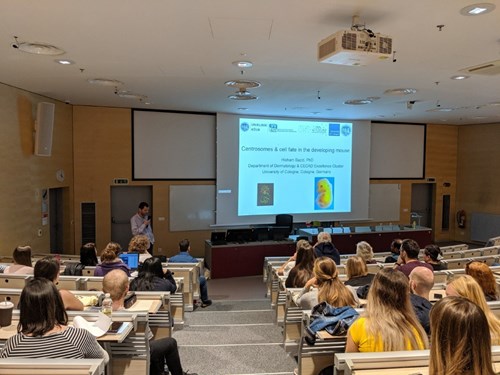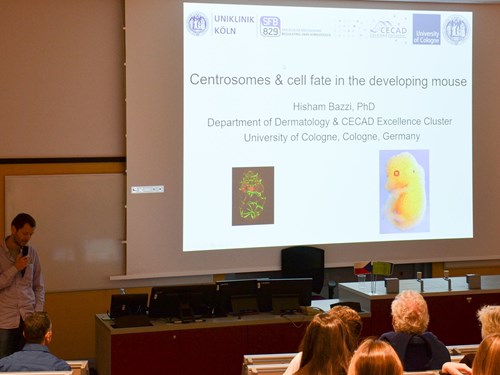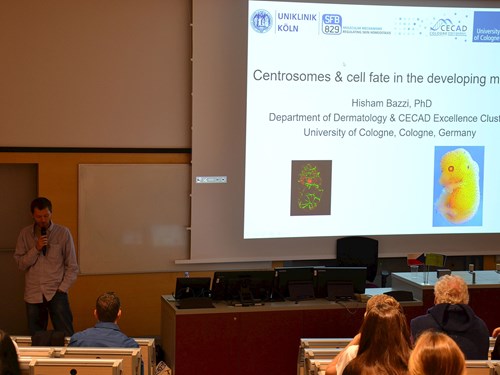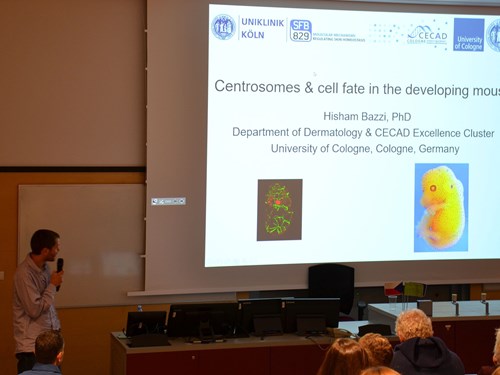Centrosomes and Cell Fate in the Developing Mouse
-
26 September 2019
4:00 PM - University Campus Bohunice (pavilion B11/ seminar room 132)
Speaker
Hisham Bazzi, Ph.D.
Research Group Leader, CECAD Excellent in Aging Research - Cluster of Excellence Cluster at the University of Cologne, Germany
The Bazzi laboratory is investigating the roles of cytoskeletal organizers in mammalian development and homeostasis. Dr. Bazzi and his team are focusing on the functions of centrosomes in the developing mouse and in stem cells. They use mouse genetics to study the consequences of the loss of centrosomes on various cell processes such as cell cycle, division, polarity, migration, signaling, and fate determination. The lab’s goal is to shed light on centrosome-related human diseases and to help find ways of treating them.
See more information about Dr. Hisham Bazzi here.
Hosted by
About the lecture
How cell fate decisions are acquired during mammalian development and whether they are linked to cell division are fundamental open questions in mammalian biology. Centrosomes that organize the spindle microtubules during mitosis are considered key regulators of cell division that may dictate fate determination. In interphase, centrosomes also provide the essential centriolar template for cilia, which in turn are important for several signalling pathways that regulate cell fate choices. Mutations in genes encoding centrosomal and ciliary proteins in humans lead to syndromes characterized by microcephaly (centrosomes) and polycystic kidneys (ciliopathies). We have previously shown that the loss of centrosomes in the developing mouse embryo and brain extended mitotic duration and activated a novel p53-dependent checkpoint that is not due to the loss of cilia, DNA damage or aneuploidy. Currently, we are genetically and biochemically defining the mechanism of this novel “mitotic surveillance checkpoint” and investigating the roles of centrosomes and cilia in cell fate decisions in developing mouse tissues and in stem cells.
Share event



